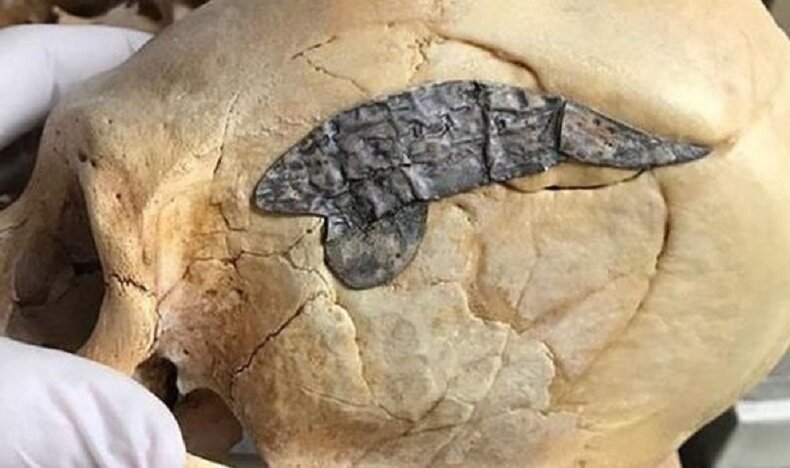Archaeologists have found a 2,000-year-old skull of a Peruvian warrior bound with metal, considered one of the oldest examples of ancient surgery.
The scientists keep the “elongated” skull fused with the metal currently in the SKELETONS, Museum of Osteology in Oklahoma, USA.
The museum hailed the find as one of its most interesting artifacts. The skull is believed to have come from a Peruvian warrior and that it had been damaged in battle around 200 years ago. It is thought that Peruvian surgeons conducted a miraculous surgery on the warriors’ skull when he returned from battle seriously injured.
The museum said through its official account on “Facebook” that the elongation of the skull structure was “achieved through head binding beginning at a very young age”. This is a practice that showed social status.
It is believed that ancient Peruvian surgeons implanted a piece of metal to repair a broken skull.
The museum said the material used was “not poured as molten metal” with the plate “used to help bind the broken bones”.
“We do not know the composition of the alloy. The plate was used to help bind the broken bones.
“Although we can’t guarantee anesthesia was used, we do know many natural remedies existed for surgical procedures during this time period.”
Experts say the operation on the skull proves that ancient peoples were able to perform complex surgeries and medical procedures.

The museum posted: “We don’t have a ton of background on this piece, but we do know he survived the procedure.
“Based on the broken bone surrounding the repair, you can see that it’s tightly fused together. It was a successful surgery.”
A spokesperson for the SKELETONS: Museum of Osteology said: “Traditionally, silver and gold was used for this type of procedure.”
The region where the skull was discovered in Peru has long been famous for its surgeons who devised a series of complex procedures to treat skull fractures.
There are multiple reasons for the elongation of the skull, ranging from as a means of distinguishing society’s elites from the common people, to serving as a form of defence.
Injury to this skull was fairly common at the time, due to the use of projectiles like slingshots during battle.
Elongated skulls were also common in Peru at the time.
They were stretched by applying force to a person’s cranium, usually by binding it between two pieces of wood.
Sources:
https://www.skeletonmuseum.com/
https://www.dailystar.co.uk/news/weird-news/elongated-skull-held-together-metal-25954558

